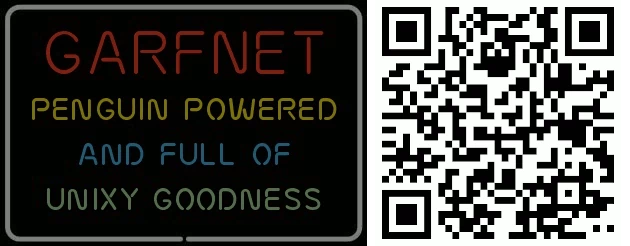Welcome to GarfNet
- Journal where the articles live.
- Gallery where the pictures can be found.
- Reference Tables section.
Other bits that may be of interest
GarfNet has been around for a while – since August 1995, in fact. Despite pruning quite a lot of old content, there is still plenty to see here. In addition to the top menu bar, here are a few short-links for most of the older stuff from our Joomla days that some people might still like to see. I thought it might make your visit a little easier if I clustered the main ones together here on the home page. So you can bookmark anything you might find interesting…
- Depth of field (DoF) calculator:- https://garfnet.org.uk/dof
- Some pictures:- https://garfnet.org.uk/gallery
- Radio frequencies, reviews & information:- https://garfnet.org.uk/radio
- Reference tables, battery equivalents etc.:- https://garfnet.org.uk/tables
- Universal units converter:- https://garfnet.org.uk/converter
- All things Linux:- https://garfnet.org.uk/linux
- Technology articles:- https://garfnet.org.uk/technical
- General articles:- https://garfnet.org.uk/general
- Mr.Goose’s Blog:- https://garfnet.org.uk/mrgoose
- Media Library:- https://garfnet.org.uk/media
- Weird & wonderful geeky stuff:-https://garfnet.org.uk/projects
